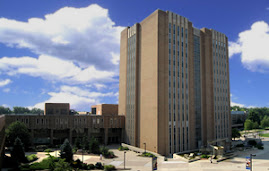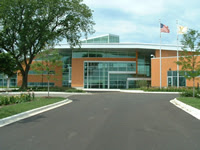Web 2.0, Library 2.0 and the future of libraries. Library 2.0 is term used to describe a new set of concepts for developing and delivering library services.
I see Library 2.0 as a way for libraries to keep up in an ever-changing information atmosphere. There has been a definite shift (and for many a preference) for information from books to an easy "click" on the Internet to the "answer", without having to sift through words on pages of books to find what they're looking for. And now, rules are changing or maybe there are no rules, structure (such as strict subject headings) is loosening, and everyone, not just librarians, is involved in the process of finding information (in creating labels and tags), not just when the library is open, but access 24/7.
Through library 2.0, libraries must learn about the new technologies, and then take it one step further; they must find a way to use it - to incorporate it into library service to become an integral part of this new information network, thereby finding their niche as a player in the information revolution. User needs are changing, the way people use library service is changing, especially for the technologically savvy younger generation, and libraries have to jump on the bandwagon to change to meet these users needs, or be left behind.
From the article,
Away From Icebergs, I like the sentence, "One-button commands, such as Flickr’s “Blog This,” and easy-to-use programs like Google Page Creator, offer promising models for this kind of user-centric service."
Libraries of the future need to move toward services that patrons can easily use on their own and don't require one-on-one training for information access. Our 24/7 web access is a step in this direction.From,
Into a New World of Librarianship, "This librarian bases all planning and proposals for services, materials and outreach on user needs and wants. User-centered libraries breakdown barriers and allow users access wherever they are: home, work, commuting, school, or at the library."
This is a must to keep patrons as lifelong library users. And "a Librarian 2.0 embraces Web 2.0 tools"-
we must join and be a player in this information network.
From, To More Powerful Ways to Cooperate, “users add value. For OCLC and its member libraries, this means expanding our definition of “collective intelligence” beyond the library professional to faculty, researchers, library patrons and others by building into our systems services that encourage these users contribute their expertise to the cooperative."
This is certainly a new way of thinking in the library community which is possible using library 2.0 tools.
From, To Better Bibliographic Services, "Libraries should get much greater mileage out of the metadata they create."
Expanding and broadening bibliographic services through library 2.0 processes would make library sources extremely valuable in the future.
From,
To a Temporary Place in Time, "the LIBRARY: a Wi
FREE space, a retreat from technohustle, with comfortable chairs, quiet, good light, coffee and single malt. You know, the
library." Ahhh, I love my library.
For me, library 2.0 means that I need to forge ahead and keep abreast of the latest trends in information technology and the way information is shared. I need some type of link to learn about new trends as they develop, and then I need to use them and become part of this new information network. This should be a goal for all of us in the information profession, to aspire to keep up in this fast-paced world of change. This is one reason I enjoy working with teens and young people so much, because they keep us aware of the latest cultural trends (and keep us younger than our years) in an ever-changing information-driven society.


























